Saihanba National Forest Park: Experience the Best of China’s Breathtaking Landscapes

An Essential Guide to Visiting Saihanba National Forest Park
In This Guide
- An Essential Guide to Visiting Saihanba National Forest Park
- The Rich History and Legends of Saihanba National Forest Park
- Main Highlights: What You Absolutely Can’t Miss
- Planning Your Visit: A Practical Guide
- Tickets: Prices, Booking, and Tips
- How to Get There: A Complete Transportation Guide
- Local Cuisine and Accommodation Nearby
- Frequently Asked Questions
- Final Thoughts on Your Trip
Nestled in the mountainous region of Hebei Province and bordering Inner Mongolia, Saihanba National Forest Park stands as a testament to nature’s resilience and humanity’s commitment to restoration. Once the royal hunting grounds of the Qing dynasty, this expansive park has undergone a remarkable transformation from barren desert to one of the world’s largest man-made forest parks, often referred to as a “green miracle.” With nearly half a billion trees thriving across its sprawling landscapes, Saihanba offers visitors an immersive experience in nature, history, and ecological revival.
A Historical Perspective
The park’s history is as rich as its flora. Following extensive deforestation at the end of the Qing dynasty, the land succumbed to desertification, leaving behind a stark landscape of sand dunes. In the 1960s, a national initiative began to reforest the area, and decades of dedication have resulted in the lush green expanses we see today. The park not only serves as a sanctuary for diverse plant and animal species but also as a poignant reminder of the impact of human activity on our environment.
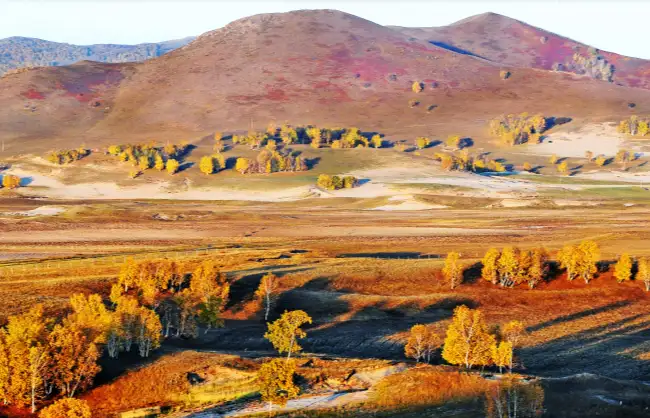
Saihanba National Forest Park.
A Natural Wonderland
Saihanba is divided into three distinct zones, each offering unique natural features and experiences:
- Southern Zone: Once the exclusive domain of emperors, this area boasts naturally preserved landscapes with ancient trees and grasslands.
- Middle Zone: The park’s main entrance, characterized by heavily forested areas primarily of larch and birch. This zone is popular among tour groups.
- Northern Zone: Located in Inner Mongolia, this less developed area features vast grasslands and rolling hills, perfect for those seeking solitude and untouched beauty.
Ideal Times to Visit
Timing your visit can significantly enhance your experience:
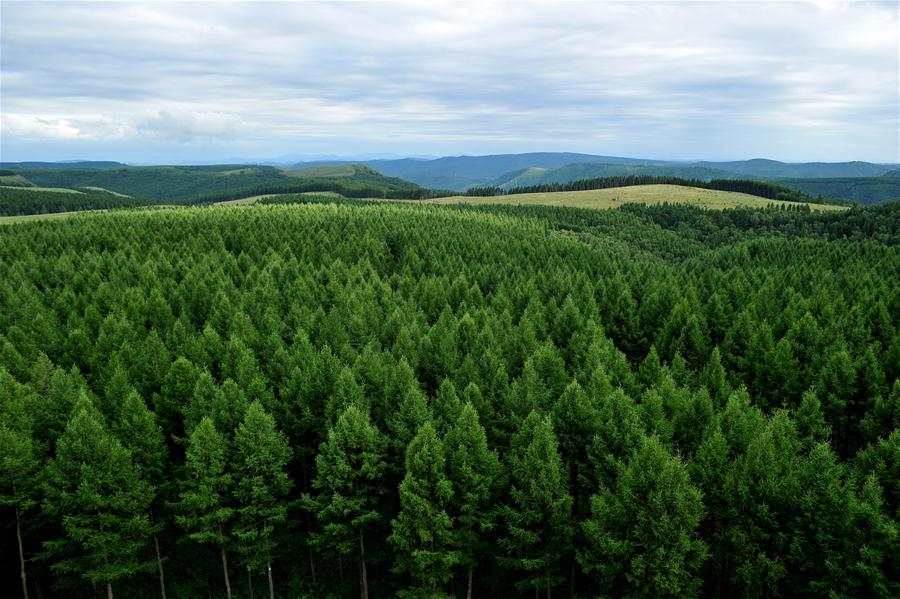
Saihanba National Forest Park.
- Late July to August: For vibrant green grasslands, visit just after the summer sun has nourished the landscape but before farmers begin harvesting.
- October: Experience a breathtaking display of autumn colors as the forests transform into a mosaic of yellows, oranges, and reds.
- Winter: The park also offers ski opportunities, albeit in a frigid climate ideal for those seeking winter sports.
Getting There
While the journey to Saihanba may require some effort — approximately 3.5 hours from Chengde city — the rewards are plentiful. For the most enriching experience, consider driving to explore remote areas of the park, allowing you to venture off the beaten path and witness the true essence of this ecological wonderland.
As you prepare for your visit, embrace the spirit of adventure and curiosity that Saihanba embodies. This park is more than just a destination; it is a living story of rebirth and conservation, waiting to be explored.

Saihanba National Forest Park.
The Rich History and Legends of Saihanba National Forest Park
Discovering the Roots of Saihanba National Forest Park
Nestled in the heart of Hebei Province, Saihanba National Forest Park is not just a breathtaking natural wonder but also a living testament to China’s rich history and the resilience of human spirit. This extensive area, once barren and desolate, has been transformed into a lush expanse of greenery that serves as a reminder of both historical legacies and environmental restoration.
A Historical Overview
Saihanba’s history dates back to the Qing Dynasty when it served as an imperial hunting ground for royalty. The pristine landscapes were cherished by emperors who sought both leisure and a connection to nature. However, the latter part of the Qing Dynasty saw a dramatic shift; rampant deforestation and environmental degradation turned the area into a desolate wasteland of sand dunes and sparse vegetation.
In the 1960s, the Chinese government recognized the urgent need for ecological restoration. This led to an ambitious reforestation project that aimed to heal the scars left by centuries of exploitation. Today, Saihanba is heralded as the largest man-made forest park in the world, boasting nearly half a billion trees and a diverse array of flora and fauna.

Saihanba National Forest Park.
Legends of Transformation
The transformation of Saihanba has given rise to many local legends and stories, often highlighting themes of sacrifice, dedication, and ecological rebirth. One poignant tale is that of the “Green Miracle,” which narrates how the dedicated efforts of thousands of workers, including many from rural backgrounds, turned a once barren land into a verdant paradise.
The Story of the Tree Planters
Families left their homes, driven by a sense of duty and a vision of a greener future. Many of these workers were inspired by their parents’ commitment to planting trees and nurturing the land. Their love and labor are said to have “watered” the roots of hope, effectively healing the planet’s scars.
The Spirits of the Forest
Local folklore also speaks of the spirits of the forest, believed to protect the trees and the creatures that inhabit them. These tales underscore the profound respect for nature that is deeply embedded in Chinese culture, where landscapes are not merely backdrops but vital participants in the narrative of life.
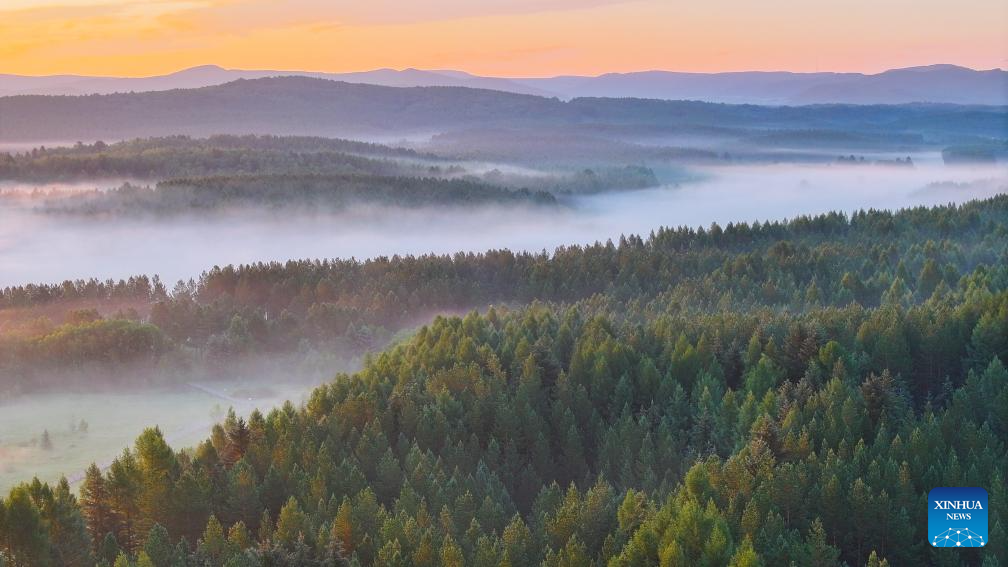
Saihanba National Forest Park.
Cultural Significance
Saihanba National Forest Park is more than just a natural reserve; it is a symbol of cultural resilience and environmental consciousness. The park attracts numerous tourists, nature lovers, and scholars who come to understand its significance. The numerous hiking trails and scenic routes offer visitors a chance to engage with nature and reflect upon the historical and cultural narratives woven into the landscape.
Visiting Saihanba Today
For international travelers, visiting Saihanba National Forest Park is an opportunity to witness firsthand the incredible journey from destruction to restoration. As you explore the sprawling expanses of lush forests and grasslands, consider the stories that have shaped this land and the legends that continue to inspire those who tread upon it.
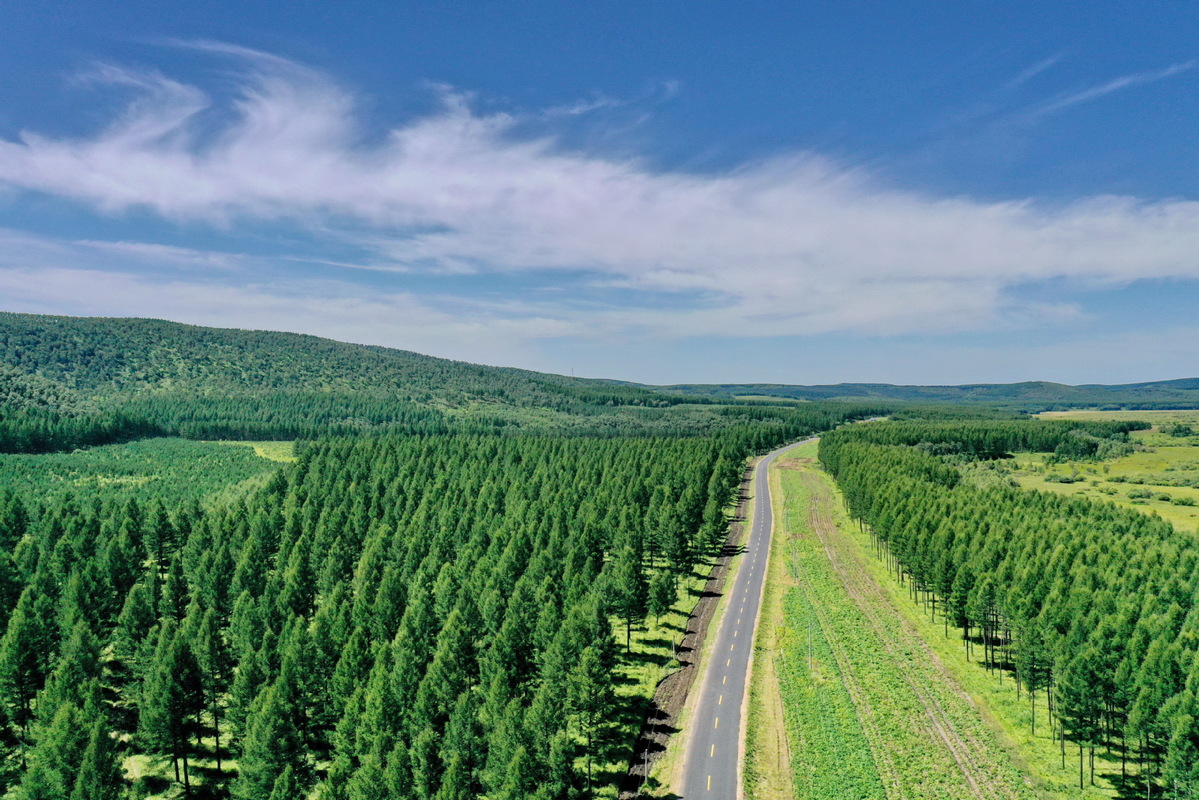
Saihanba National Forest Park.
Whether it’s the vibrant green of summer or the rich hues of autumn, each season brings its own charm and a reminder of the historical and cultural richness that Saihanba embodies. To truly appreciate this “green miracle,” one must venture beyond the tourist paths and immerse oneself in the serene beauty and profound legacy of Saihanba National Forest Park.
Main Highlights: What You Absolutely Can’t Miss
Discover the Wonders of Saihanba National Forest Park
Saihanba National Forest Park, known as the “green miracle,” is a stunning testament to nature’s resilience and human determination. Situated in Weichang County, Hebei Province, this expansive park offers a myriad of experiences that international travelers simply can’t miss. Here’s a detailed guide to some of the main highlights that will ensure your visit is both enriching and memorable.
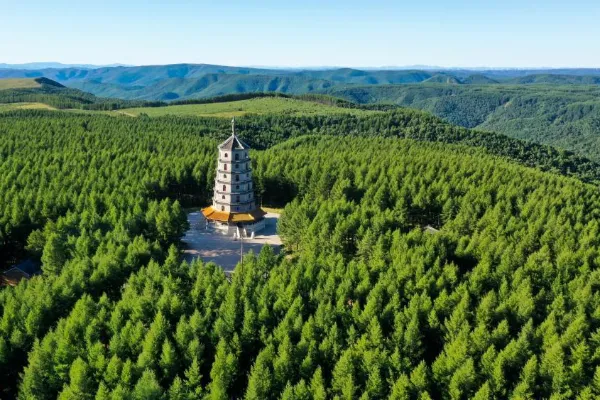
Saihanba National Forest Park.
1. The Vastness of the Park
- World’s Largest Man-Made Forest: Covering an area of over 1,000 square kilometers, Saihanba is recognized as the world’s largest man-made forest. It boasts nearly half a billion trees, a remarkable achievement considering the area was once a barren wasteland.
- Three Distinct Zones: The park is divided into three main zones:
- Southern Zone: The historic royal hunting grounds, characterized by natural landscapes dotted with ancient trees and expansive grasslands.
- Middle Zone: The most developed area, featuring heavily forested sections with larch and birch trees. This zone is popular among tour groups.
- Northern Zone: Transitioning into Inner Mongolia, this less developed area showcases rolling hills and open grasslands, perfect for those seeking solitude in nature.
2. Historical Significance
- From Royal Hunting Grounds to Reforestation: Saihanba’s history dates back to the Qing dynasty, when it served as a royal hunting ground. Following extensive deforestation, the area became a desert until reforestation efforts began in the 1960s, transforming it into the lush paradise we see today.
3. Flora and Fauna
- Biodiversity Hotspot: The park is home to thousands of species of plants and animals. Nature lovers can spot rare flowers, unusual bird species, and various small mammals, making it a prime location for wildlife photography and birdwatching.
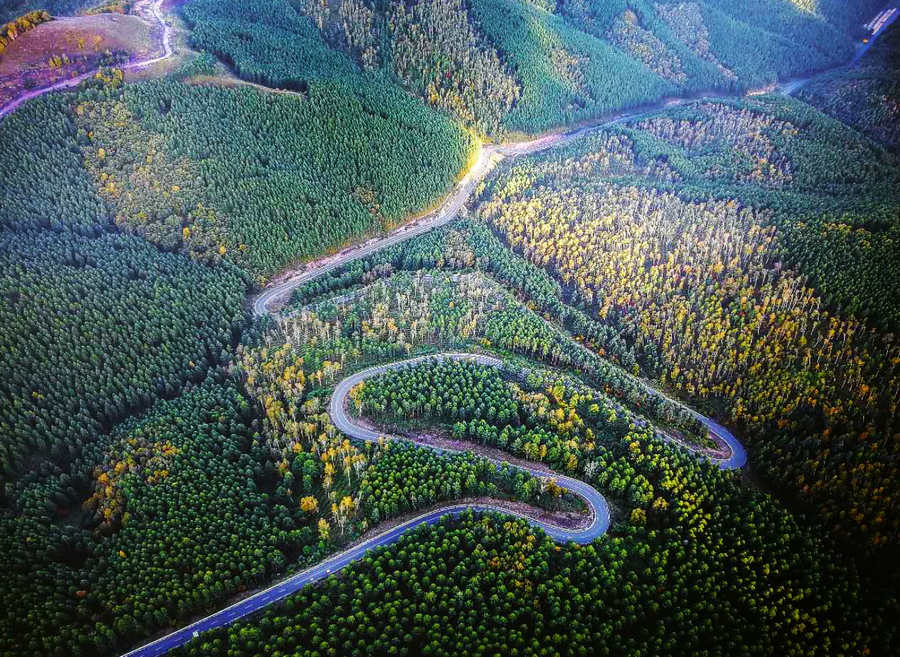
Saihanba National Forest Park.
4. Scenic Beauty and Activities
- Explore on Foot: While tour buses cater to some well-trodden paths, the true magic of Saihanba lies in its hidden corners. Rent a car and venture into the remote paddocks to hike through serene grasslands, where you can fully appreciate the tranquility and beauty of your surroundings.
- Seasonal Splendor: Plan your visit for late July or August to witness the vibrant green grasslands or in October for a stunning display of autumn colors. Winter sports enthusiasts can also explore skiing options available in the park during the colder months.
5. Cultural Connections
- Understanding Human Impact: Engage with the local narratives that highlight the efforts of previous generations in restoring this landscape. Many visitors resonate with the stories of families who dedicated their lives to planting trees and revitalizing the environment.
6. Practical Information
- Getting There: While it may take some effort to reach Saihanba, the journey is worthwhile. Expect a 3.5-hour drive from Chengde city, plus additional travel time within the park.
- Best Time to Visit: Summer offers pleasant temperatures, while autumn showcases breathtaking scenery. Winter can be extremely cold, but the park’s winter activities are a unique experience for the adventurous traveler.
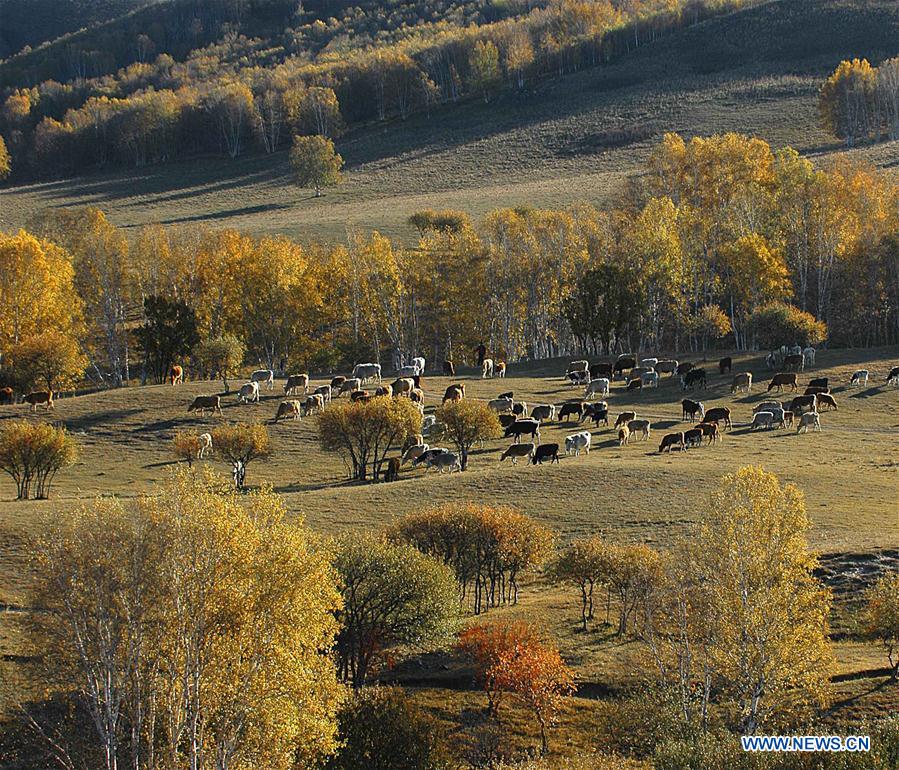
Saihanba National Forest Park.
7. Tips for an Unforgettable Experience
- Avoid Tour Groups: For a deeper connection with nature, explore independently. The magic of Saihanba lies in its less traveled paths, where you can immerse yourself in the stunning landscapes without the distraction of crowds.
- Stay for Multiple Days: With so much to see, plan to spend at least three days in the park to truly appreciate its vastness and diversity.
In conclusion, Saihanba National Forest Park is not merely a destination; it’s a journey into the heart of China’s environmental restoration and natural beauty. Whether you’re a history buff, a nature enthusiast, or simply seeking tranquility, Saihanba offers an unforgettable experience that connects you deeply to both the land and its storied past.
Planning Your Visit: A Practical Guide
Essential Information for Your Visit to Saihanba National Forest Park
Saihanba National Forest Park, often hailed as a “green miracle,” is not merely an outdoor destination; it’s a vivid reminder of China’s remarkable ecological restoration efforts. Nestled in Weichang County, Hebei Province, this vast park offers a unique blend of natural beauty, historical significance, and cultural richness. Here’s everything you need to plan an unforgettable visit.

Saihanba National Forest Park.
Getting There
Traveling to Saihanba:
– By Car: The most convenient way to explore Saihanba is by driving. From Chengde city center, it takes about 3.5 hours to reach the park. Expect an additional 1.5 hours to travel from the park entrance to local accommodations. Renting a car is advisable, as it allows you to explore the park’s less-trafficked areas.
– Public Transport: While there are tour buses available, they often only stop at the most commercialized sites. If you prefer a more immersive experience, consider hiring a private car or joining a local tour that offers flexibility.
Best Times to Visit
The park is beautiful year-round, but different seasons offer distinct experiences:

Saihanba National Forest Park.
- Summer (July to August): Ideal for witnessing the lush grasslands at their greenest, just before local farmers begin hay harvesting.
- Autumn (October): Perfect for those wanting to see stunning fall foliage. The colors are most vibrant during this month.
- Winter: The park also features a ski field, making it an attractive winter destination, albeit with very cold temperatures. Dress warmly if you choose to visit during this season.
Exploring the Park
Saihanba National Forest Park encompasses three distinct zones, each with its unique charm:
- Southern Zone: Once the royal hunting grounds, this area is characterized by its natural landscape of ancient trees and expansive grasslands.
- Middle Zone: This heavily forested area is home to various tree species like larch and birch. Most tour groups congregate here, so expect more people.
- Northern Zone: Less developed and quieter, this region straddles the border with Inner Mongolia and features higher hills and more open grassland.
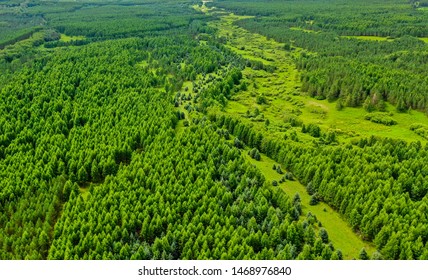
Saihanba National Forest Park.
Activities:
– Hiking and Nature Walks: Venture into the remote areas to truly appreciate the diverse flora and fauna. Look out for rare flowers and unique bird species that thrive in this restored ecosystem.
– Photography: Capture the stunning landscapes, particularly during golden hour when the light bathes the park in warm tones.
– Wildlife Spotting: Bring binoculars to spot animals such as squirrels and various bird species in their natural habitat.
Tips for a Successful Visit
- Stay Hydrated and Pack Snacks: The park is vast, and exploring the remote areas can be time-consuming. Ensure you have enough water and snacks to keep your energy up.
- Dress Appropriately: The altitude (around 1,600 meters) means summer days are warm but evenings can get chilly. Layer your clothing to adapt to changing temperatures.
- Avoid Tour Groups: While they offer convenience, they often limit your experience to the most commercialized spots. Exploring independently will enhance your connection with nature.
- Respect Nature: As you enjoy the park, remember to leave no trace. Stick to the trails, avoid littering, and be mindful of wildlife.
Accommodations
- Local Hotels: There are several hotels near the park, ranging from basic to more comfortable options. Booking in advance, especially during peak seasons, is recommended.
- Camping: For the adventurous traveler, camping is an option in designated areas. This allows for a more immersive experience under the stars.
Conclusion
Your visit to Saihanba National Forest Park will not only be a retreat into nature but also a journey through history, reflecting the resilience and dedication of those who transformed a barren landscape into a flourishing forest. Whether you’re a nature enthusiast, a history buff, or simply seeking tranquility, this remarkable destination promises an enriching experience.
Tickets: Prices, Booking, and Tips
When planning your visit to Saihanba National Forest Park, understanding the ticketing process and pricing can enhance your experience and ensure a smooth adventure in this “green miracle.” Here’s what you need to know about purchasing tickets, booking your visit, and some helpful tips for making the most of your time in the park.
Ticket Prices
- General Admission: The entrance fee is approximately 60 RMB (around $9 USD) per person. This ticket grants access to the majority of the park’s stunning landscapes.
- Children and Seniors: Discounts may apply for children under a certain age and senior citizens. It’s advisable to check for any available concessions.
- Seasonal Variations: Keep in mind that ticket prices may vary slightly during peak tourist seasons, such as July and August, when the grasslands are in full bloom.
Booking Your Visit
- Online Reservations: While tickets can typically be purchased at the park entrance, booking online in advance is highly recommended, especially during the high season. Websites such as Trip.com or the official Saihanba ticketing site can facilitate this process.
- Guided Tours: For those looking to enrich their visit with expert insights, consider joining a guided tour. These often include transportation from nearby cities such as Chengde and can range from 300 to 600 RMB ($45 to $90 USD), depending on the duration and inclusions.
- Accommodation Packages: Some hotels in the area offer packages that include park tickets, which can be a convenient option if you plan to stay overnight.
Tips for an Enjoyable Experience
- Arrive Early: Saihanba is expansive, and getting an early start will allow you to explore more of its breathtaking scenery before the crowds arrive.
- Transportation: Renting a car is highly recommended. This gives you the freedom to venture into the less touristy areas of the park, where you can experience the natural beauty without the hustle of group tours.
- Best Times to Visit: For lush green grasslands, plan your visit for late July or August. If you’re interested in the stunning autumn foliage, October is ideal. Winter visitors should be prepared for cold temperatures, but the snow-covered landscapes are equally captivating.
- Dress Appropriately: The park’s elevation of approximately 1,600 meters means temperatures can be cooler than expected. Dress in layers and wear comfortable walking shoes for exploring the diverse terrains.
- Stay Hydrated and Pack Snacks: While there are some facilities within the park, they may not always be open or fully stocked. Bringing your own water and snacks can enhance your experience, especially if you plan to hike or explore more remote areas.
By understanding the ticketing process, planning your visit, and following these tips, you can fully immerse yourself in the natural beauty and historical significance of Saihanba National Forest Park. Enjoy your adventure in one of China’s most remarkable landscapes!
How to Get There: A Complete Transportation Guide
Getting to Saihanba National Forest Park can be an adventure in itself, as this stunning natural wonder is somewhat off the beaten path. However, the journey is well worth it for those looking to immerse themselves in the beauty of China’s largest man-made forest. Here’s your complete guide on how to navigate your way to this remarkable destination.
By Car
Driving from Chengde
The most convenient way to reach Saihanba National Forest Park is by car, particularly if you are staying in Chengde. The drive takes approximately 3.5 hours, covering around 180 kilometers (112 miles). Here’s how to get there:
- Head northwest on G101 from Chengde city center.
- Continue following G101 until you reach the intersection with S217.
- Take S217 towards Weichang County, and follow the signs leading you to Saihanba National Forest Park.
The scenic drive offers picturesque views, especially as you begin to approach the park’s boundaries.
Navigating Within the Park
Once you arrive at the park, having your own vehicle allows you to explore the vast landscapes at your leisure. The park features three distinct zones, each offering a different experience:
- Southern Zone: Known for its natural beauty and historical significance as the old royal hunting grounds.
- Middle Zone: Heavily forested with larch and birch, this area is where most tour groups tend to congregate.
- Northern Zone: Bordering Inner Mongolia, this less developed area features higher hills and is ideal for those seeking solitude.
By Public Transport
Taking a Bus from Chengde
If you prefer not to drive, you can take a bus from Chengde to Weichang County. Here’s how:
- Bus Station: Head to Chengde’s main bus station and look for buses heading to Weichang.
- Duration: The bus ride takes approximately 4 to 5 hours.
- Transfer to Local Transport: Once in Weichang, you can hire a taxi or find local transport options to reach the park entrance, which is about 60 kilometers (37 miles) away.
By Train
While there is no direct train service to Saihanba National Forest Park, you can take a train to Chengde and then proceed by bus or car, as described above. The Chengde Railway Station is well-connected to major cities, making it a convenient entry point.
Best Time to Visit
When planning your trip, consider the following:
- Summer (Late July to August): Ideal for experiencing the vibrant grasslands before they are harvested.
- Autumn (October): Perfect for witnessing the stunning fall colors of the forests.
- Winter: The park offers a ski field, attracting winter sports enthusiasts, though be prepared for cold temperatures.
Tips for a Smooth Journey
- Navigation Apps: Download a reliable map app that works offline, as cell service may be spotty in rural areas.
- Fuel Up: Make sure to fill up your tank before the journey, as gas stations can be sparse near the park.
- Accommodations: Consider booking a hotel in Weichang for easy access to the park over multiple days.
In conclusion, reaching Saihanba National Forest Park requires some effort, but the stunning landscapes, rich history, and unique ecosystems waiting for you make it an unforgettable destination. Whether you choose to drive, take a bus, or a combination of transport methods, the journey will be part of the adventure. Enjoy your exploration of this “green miracle” of China!
Local Cuisine and Accommodation Nearby
Savoring Local Flavors and Finding Comfort Near Saihanba National Forest Park
Nestled within the breathtaking expanse of Saihanba National Forest Park, visitors not only have the chance to immerse themselves in nature but also to indulge in the rich tapestry of local cuisine and accommodation options that reflect the region’s historical and cultural heritage.
Culinary Delights
The culinary scene near Saihanba is a delightful blend of traditional Chinese flavors and local specialties, particularly influenced by the Mongolian heritage of the area. Here are some must-try dishes and dining spots:
-
Mongolian Hot Pot (火锅)
A favorite among locals, this communal dining experience involves a bubbling pot of broth where you can cook an assortment of fresh meats, vegetables, and mushrooms. Look for restaurants in Weichang County that offer authentic Mongolian hot pot, often served with unique dipping sauces. -
Roast Lamb (烤羊腿)
Renowned for its tenderness and flavor, roast lamb is a staple in Mongolian cuisine. Many restaurants near the park pride themselves on their expertly grilled lamb dishes, making it a perfect choice after a day of exploring. -
Fried Rice with Mushrooms and Vegetables (炒饭)
For a quick yet satisfying meal, try the local fried rice, often made with freshly foraged mushrooms from the surrounding forests. -
Local Dairy Products
Don’t miss out on sampling traditional Mongolian dairy products, such as fermented milk (酸奶) and cheese (奶酪). These creamy delicacies offer a unique taste of the region’s pastoral roots.
Recommended Restaurants:
– Saihanba Restaurant: Located just outside the park entrance, this eatery serves a variety of local dishes, including delicious hot pot and grilled meats.
– Mongolian Yurt Dining: For a more immersive experience, consider dining in a yurt where you can enjoy authentic Mongolian cuisine in a traditional setting.
Comfortable Stays
After a day of adventure, retreat to one of the nearby accommodations that cater to different preferences and budgets. From cozy guesthouses to more luxurious options, here’s where you can rest your head:
-
Saihanba Eco-Lodge
This eco-friendly lodge blends seamlessly into the natural environment, offering comfortable rooms with stunning views of the forest. It’s an excellent choice for nature enthusiasts looking to remain close to the park’s attractions. -
Weichang County Hotels
There are several hotels in Weichang County that provide modern amenities and easy access to Saihanba. Options range from budget-friendly inns to more upscale hotels, ensuring that every traveler finds a suitable place to stay. -
Mongolian Yurts
For a unique experience, consider staying in a Mongolian yurt. These traditional tents offer a cozy and culturally immersive experience while providing basic amenities. -
Camping Options
For the adventurous, camping within designated areas of the park allows you to experience the natural beauty firsthand. Make sure to check local regulations and prepare accordingly.
Conclusion
Whether you’re savoring the rich flavors of Mongolian cuisine or resting in a charming lodge, the area surrounding Saihanba National Forest Park offers an enriching experience that complements the stunning natural beauty of this “green miracle.” Embrace the local culture and history as you enjoy your stay in this remarkable part of China.
Frequently Asked Questions
Frequently Asked Questions about Saihanba National Forest Park
1. What is Saihanba National Forest Park known for?
Saihanba National Forest Park is celebrated as the world’s largest man-made forest park, housing nearly half a billion trees. Originally part of the royal hunting grounds during the Qing Dynasty, the park has transformed from barren land into a lush and thriving ecosystem, making it a haven for diverse flora and fauna.
2. How do I get to Saihanba National Forest Park?
The park is approximately a 3.5-hour drive from Chengde city center. It is advisable to travel by car to explore the park thoroughly, as many tour buses only visit popular tourist spots. Driving gives you the freedom to discover more remote and less crowded areas.
3. What are the best times to visit the park?
For vibrant green grasslands, plan your visit in late July or August, just before the hay-cutting season. If you aim to witness the stunning autumn colors of the forests, October is ideal. Winter visits are also possible, with a ski field available, though be prepared for cold temperatures.
4. Are there different areas within the park that I should know about?
Yes, Saihanba National Forest Park is divided into three main zones:
– Southern Zone: The old royal hunting grounds, featuring natural landscapes with ancient trees and grasslands.
– Middle Zone: The most developed area with heavy forestation of larch and birch trees, where most tourist groups tend to congregate.
– Northern Zone: Located in Inner Mongolia, this area is less developed with more open grasslands and scenic hills, attracting fewer visitors.
5. What activities can I do in Saihanba National Forest Park?
Visitors can enjoy a variety of activities including hiking, wildlife spotting, and photography. The park’s expansive landscapes provide opportunities for serene walks away from crowds where you can appreciate rare flowers and unique bird species. In winter, skiing is a popular activity.
6. What should I bring when visiting the park?
It’s advisable to pack essentials such as:
– Comfortable walking shoes for exploring the vast landscapes.
– Weather-appropriate clothing, as temperatures can vary significantly between day and night.
– Camera and binoculars for capturing the stunning scenery and observing wildlife.
– Sufficient water and snacks, especially if you plan to hike in remote areas.
7. Is it possible to stay overnight in or near the park?
Yes, there are accommodations available within and near the park. However, facilities may be limited in more remote areas. It’s recommended to book in advance, especially during peak tourist seasons, to secure a comfortable stay.
8. Can I visit Saihanba National Forest Park as part of a tour group?
While tour groups are available, they often only cover popular spots within the park. To fully experience the natural beauty and tranquility of Saihanba, consider driving yourself or joining smaller, more specialized tours that allow for greater exploration of the park’s diverse landscapes.
Final Thoughts on Your Trip
As your journey through the enchanting Saihanba National Forest Park draws to a close, take a moment to reflect on the myriad experiences this remarkable destination has offered. Nestled in the picturesque landscape of Hebei province, Saihanba is not just a park; it is a testament to human resilience and the power of nature’s revival.
A Journey Through Time and Nature
Walking through the vast expanses of this man-made forest, you are reminded of its rich history. Once a royal hunting ground, the area transformed from desolate sands into a flourishing ecosystem, now home to nearly half a billion trees and an array of wildlife. This “green miracle” serves as a poignant reminder of the impact of conservation efforts and a celebration of nature’s ability to heal.
Embrace the Serenity
Whether you chose to traverse the tranquil grasslands, explore dense forests, or simply bask in the beauty of the surroundings, Saihanba offers a sanctuary for both the adventurous and the contemplative. The park’s diverse zones invite you to lose yourself amidst ancient trees, vibrant flora, and the soothing sounds of nature.
Plan Your Return
For many travelers, a visit to Saihanba is merely the first chapter in a lifelong love affair with its landscapes. Each season presents a unique canvas; from the lush greens of summer to the vibrant hues of autumn, the park is ever-changing and always inspiring. Consider returning in different seasons to witness its transformations, whether it be the blooming grasslands in late July or the serene ski slopes in winter.
Your Contribution to Nature
As you depart, remember that your journey here contributes to a larger narrative of environmental stewardship. By supporting such natural wonders, you become part of a collective effort to preserve and appreciate the beauty of our planet.
In conclusion, Saihanba National Forest Park is more than a destination; it is an invitation to connect with nature, honor history, and find peace in the great outdoors. Carry the spirit of Saihanba with you, and may it inspire your next adventures in the rich tapestry of China’s cultural and natural heritage. Safe travels!